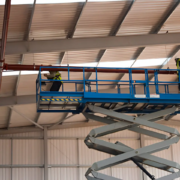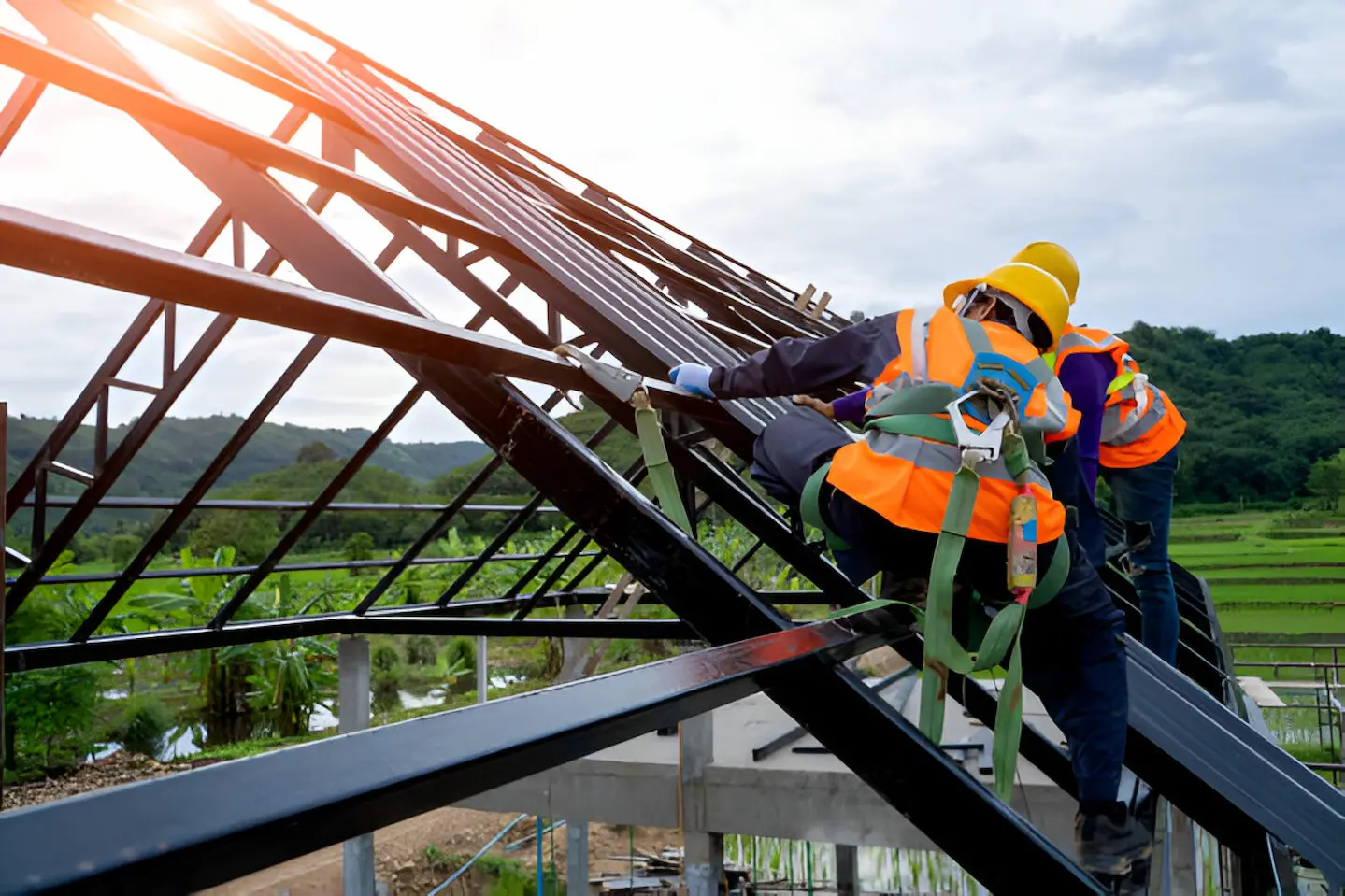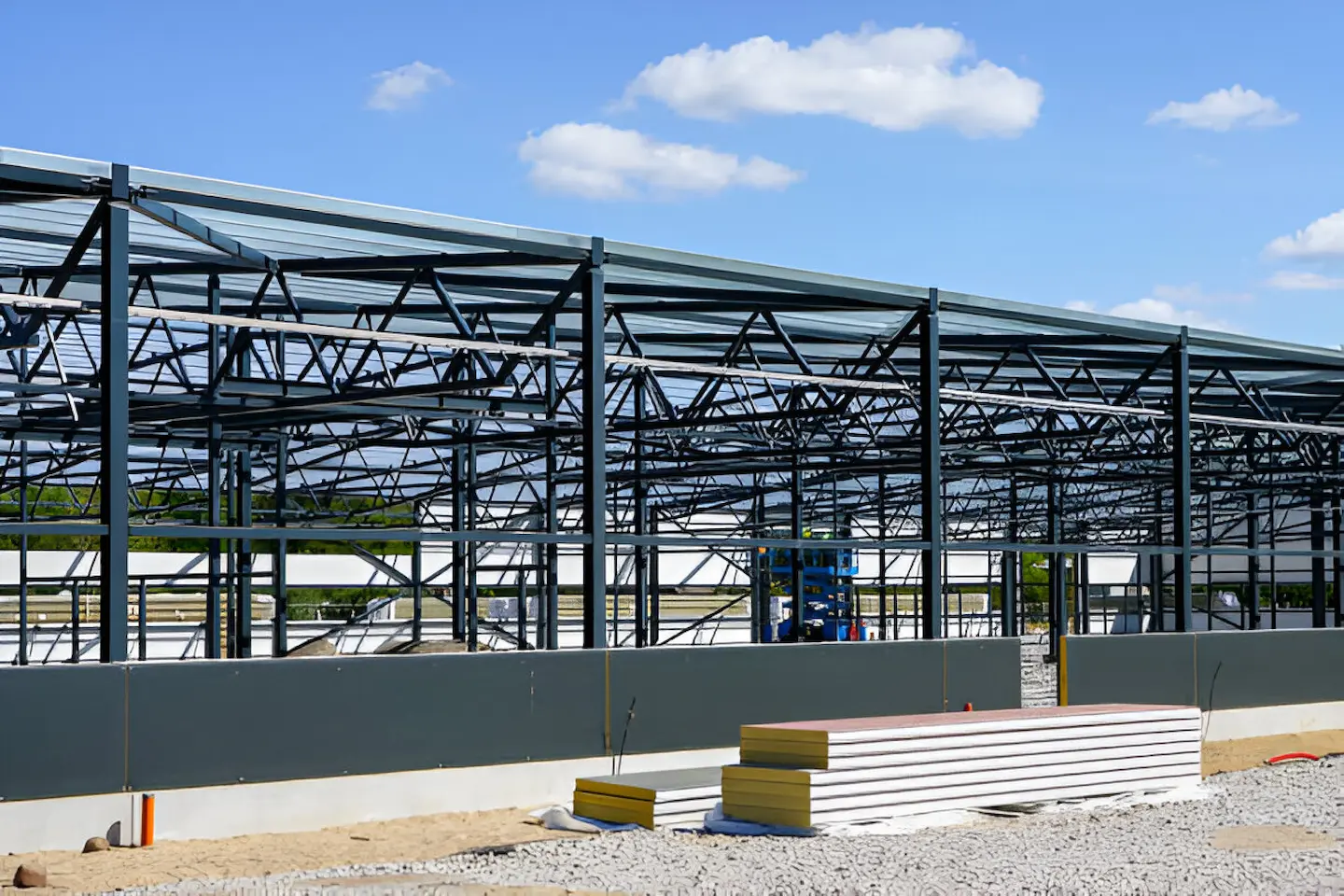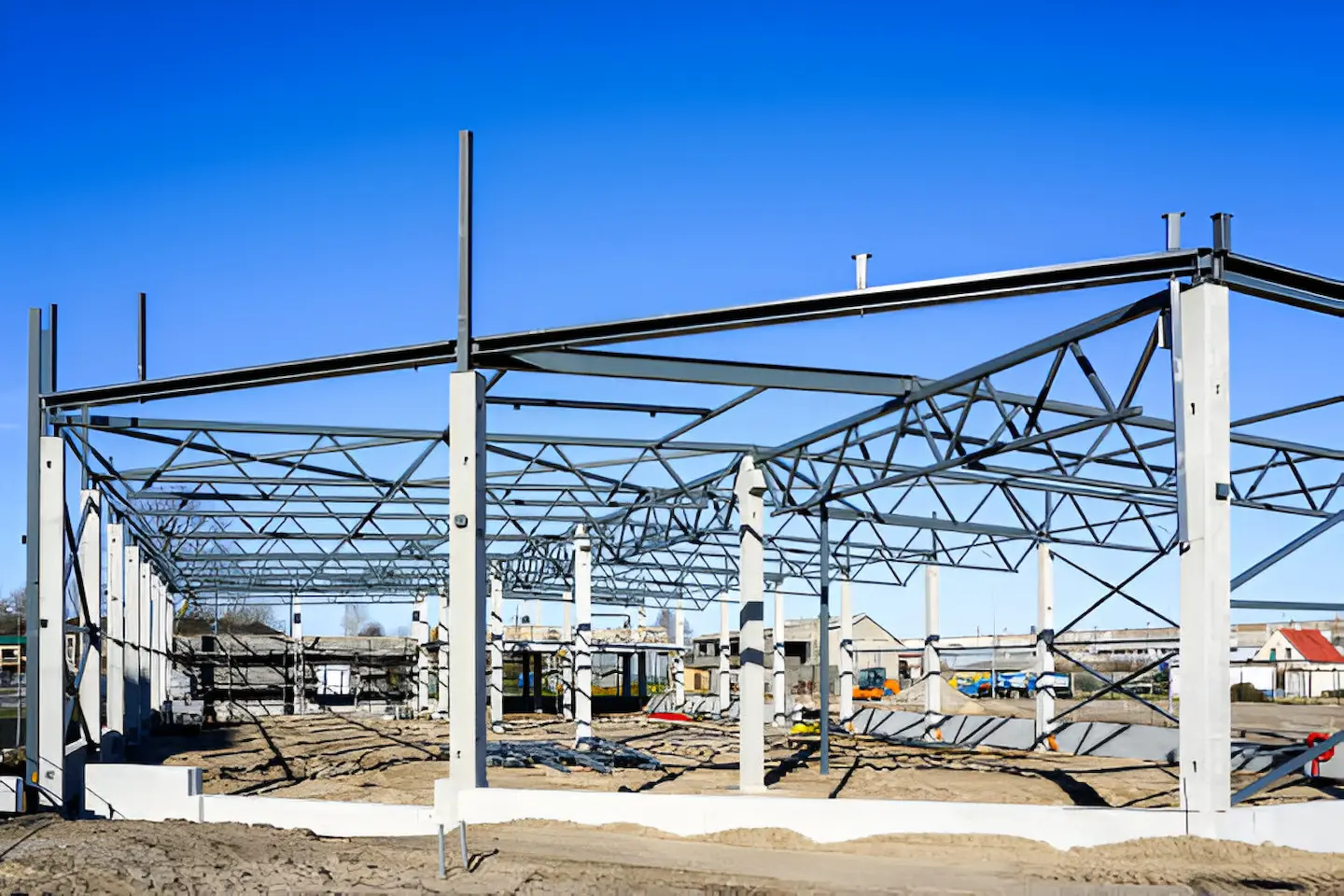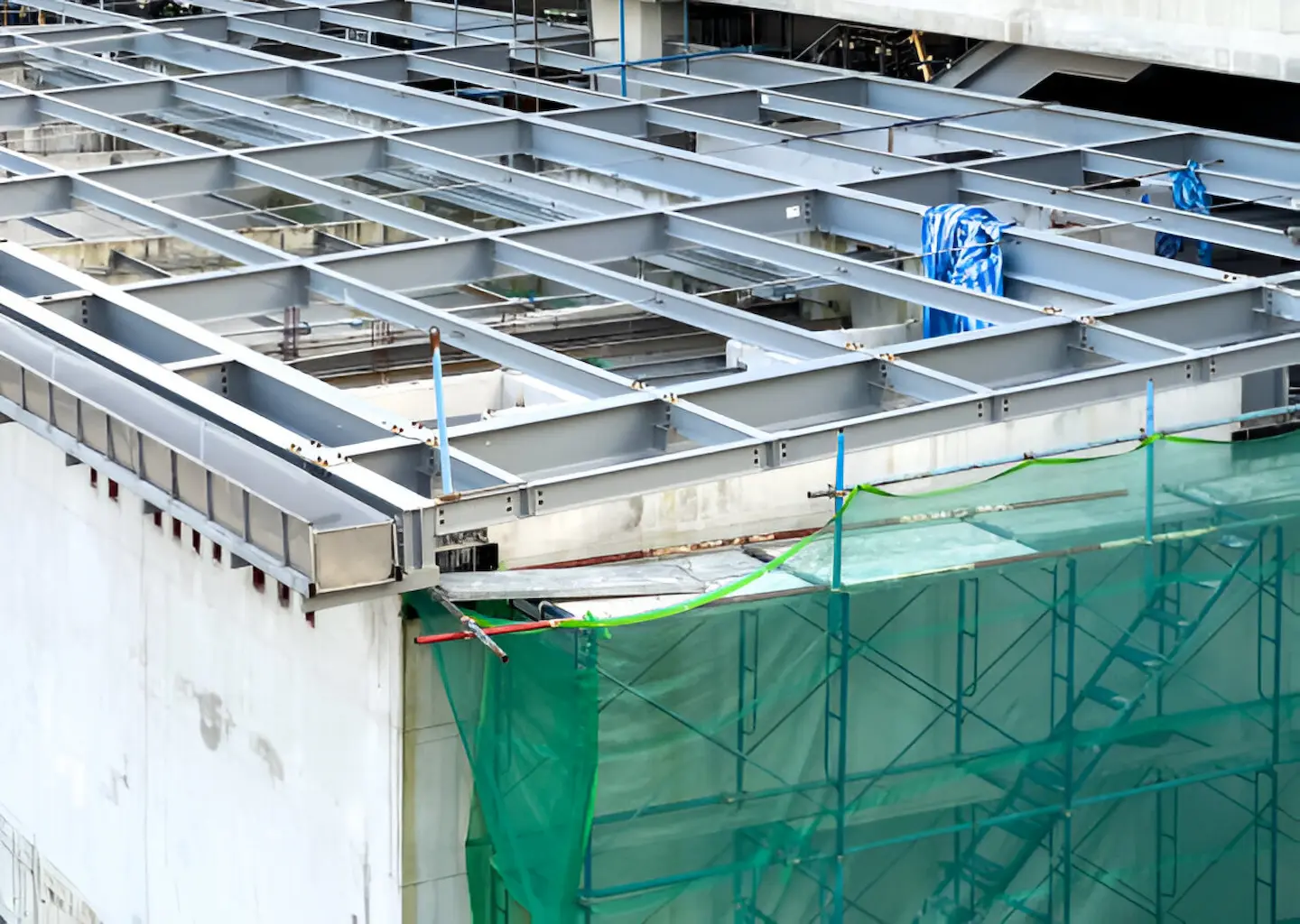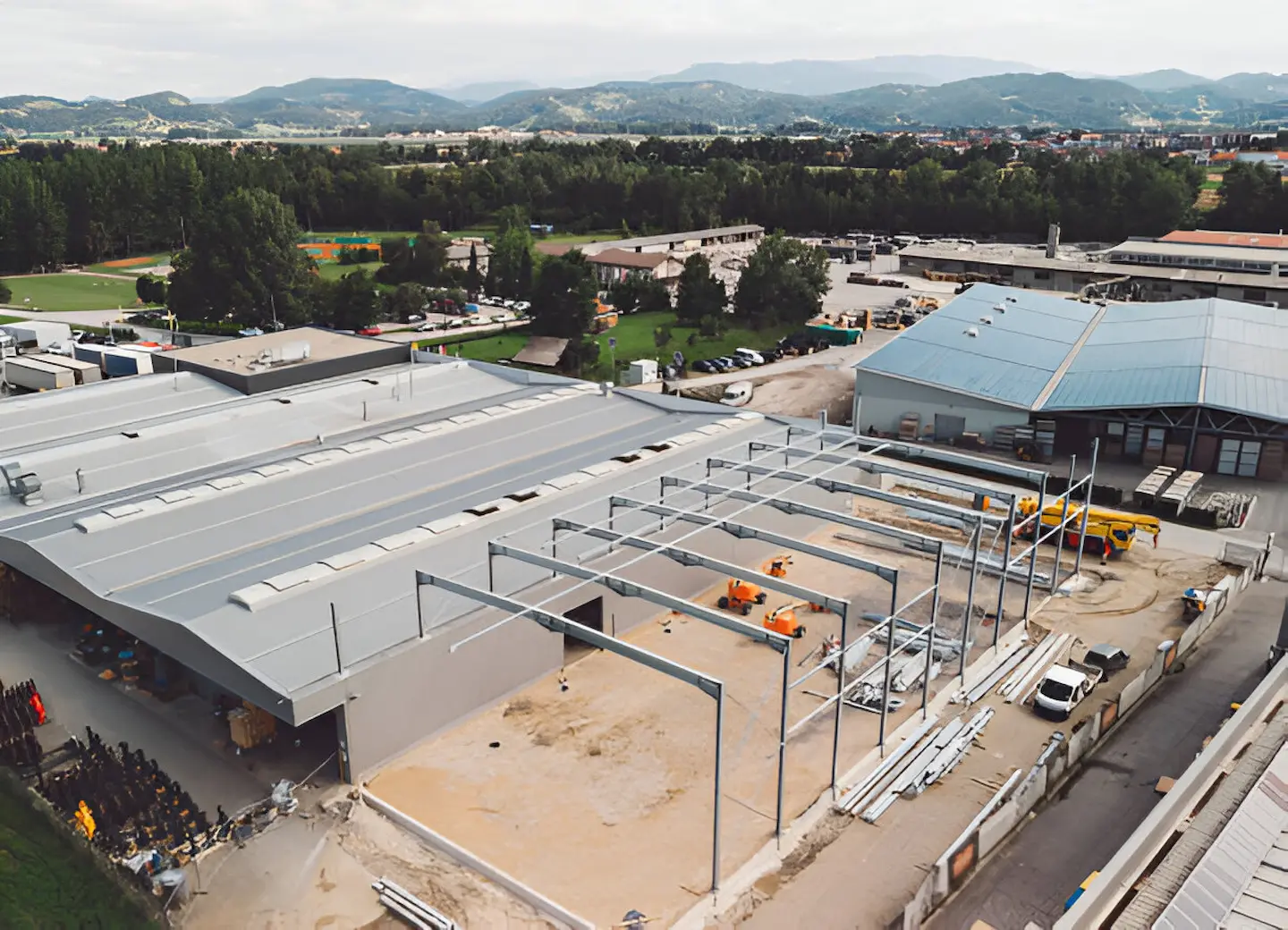How Much Does It Cost To Insulate A Steel Building, Cost & Tips
Are you fed up with your steel building becoming uninhabitable and hot in the summer? Are you searching for the cheapest and most effective way of insulating a steel building? If so, you’ve landed in the right place. Insulating a metal building is an important consideration for both commercial and residential owners looking to enhance energy efficiency, reduce noise, and control interior temperatures. However, the cost of this project can vary significantly depending on various factors, including the size of the building, the type of insulation, and the complexity of the insulation. If you’re thinking of insulating your building this season, you must be aware of the budget-efficiency tips as well. Without any delays, keep reading this article for more details!
Why Insulate A Steel Building?
Metals are undeniably good conductors of heat, right? However, living in the building is unbearable when it’s uninsulated. Uninsulated steel metal buildings tend to absorb heat during hot weather. Not only this but such buildings are also very cold in winter. However, insulating your metal building is equally important because of the following leading reasons.
Reduce Noise
Noise reduction is one of the most essential benefits of steel building insulation. Naturally, steel buildings are sonorous and produce a lot of noise. For this reason, insulation is used for soundproofing to minimize noise between walls, rooms, and floors in buildings. Aside from this, sound reduction in steel buildings makes the building conducive for rest, study, as well as office.
Prevent Condensation
Condensation in steel buildings is a result of warm air that comes in contact with cold metal sheets. However, condensation causes mold growth and unpleasant water droplets in metal buildings. Insulated buildings are an excellent choice for people with allergies. Insulation reduces the risks of condensation by limiting the moisture buildup in the building significantly.
Diminish Cold And Heat Transfer
For optimal comfort, insulation is paramount in every steel building. By effectively insulating buildings, you can generate a thermal barrier that minimizes cold and heat transfer between your home and the environment. Heat transfer occurs due to warm air escaping the surroundings through gaps. Insulation seals these holes, maintaining a consistent temperature.
Indoor Air Quality
Bad smells from mold growth, mildew, and outside cause bad air in buildings. No need to worry at all as insulation helps improve the air quality by reducing mold and mildew growth and blocking out bad smells in metal buildings. Adding more, insulation plays a vital role in making the building conducive for allergic individuals by reducing allergens and dust in the building.
Increase Durability
Insulation makes the durability of the steel building by protecting the place during rigorous weather conditions. However, an unheated steel building house is vulnerable to structural damage with the passage of time because the metals expand and contract during extreme temperature fluctuations. If you want to make your metal building durable, make it insulated.
Boost Your Property’s Value
Have you ever heard that insulation can help increase the overall worth of your property? Sounds great, right? Insulating your steel building boosts its value for potential buyers. So, it’s obvious that every buyer would rather invest in purchasing a building that is energy-efficient as well as comfortable. This is how insulation can be a valuable investment for you in the future.
Things To Consider Before Insulating The Steel Building
No denying metal buildings offer numerous benefits, including residential, commercial, logistics buildings, etc. However, insulation is very important to make these buildings highly comfortable for the desired purpose. You need to consider the following crucial factors before insulation.
Size And Shape Of The Building
The size and shape of the building also influence the whole insulation process. In small-sized buildings, less insulation would be required. However, when determining the amount of insulation required also depends on the shape of the building. The orientation of the building plays a considerable role in the exact amount of insulation needed. For instance, a steel building with many openings, like windows, demands more insulation than the one with fewer openings.
The Purpose Of Use
The intended use of the steel building plays a significant role in the amount and type of insulation needed. A steel building meant for commercial applications may demand a different type of insulation compared to a logistics metal building. Moreover, the amount of insulation required will be different based on the purpose of the building. Adding more to all this, in essence, a workshop or garage doesn’t need as much insulation as required by a living space.
Climate Conditions
Above all, it is crucial to consider the climate of the steel building’s location before you start the insulation process. The climate is enough to determine the amount and type of insulation needed for the metal building. Steel buildings located in cold climates demand a higher level of insulation compared to metal buildings in warmer regions. Therefore, the next time you embark on insulating the metal building, you must ensure to check the climate condition as well.
Moisture Control
Along with other factors discussed above, moisture control also affects the whole insulation process. The insulation material used for your 30×40 steel building should be able to effectively retard vapor and prevent moisture buildup at the same time. Not only this but this kind of moisture control can be helpful in preventing mold growth and condensation in your metal building. Ensure to check proper moisture control before you start insulating your home.
Energy Efficiency
The type of insulation material used should have the potential to make the building energy-efficient by minimizing heat loss to the surroundings. However, you must keep in mind that different types of materials provide different types of insulation. For instance, if the insulation material to be used has a higher R-value, the metal building would be more energy-efficient. If you want the building to be energy-efficient, use the high R-value material.
Budget
On top of all of the above, the cost of insulation should also be considered when choosing the type of insulation needed for your steel building. Your exact budget would be enough to determine the type of insulation for your steel building. This is because the cost of insulation differs for different types of materials. Regardless of the cost of the material, you would have great peace of mind knowing you’ll get exceptional quality insulated steel building.
Maintenance
No matter what type of material is to be used in the insulation process or what the estimated budget is, you must ensure that the outcomes are great. For instance, the insulated metal building must be easy to repair and maintain. It would help you prevent frequent repairs in the long run. If you’ve set your mind to insulate your metal building this season, it is highly recommended to go for the metal insulation option, which can be maintained with ease.
Environmental Impact
Insulating a steel building by yourself can be a challenging and daunting task at the same time, right? However, the environmental impact of the insulation material to be used should also be considered to end up with the best results. For instance, the insulation material used for residential and commercial steel buildings is meant to be hypoallergenic. So, if you are allergic to dust and other particles to be used in the building, insulation can prevent you from this too.
Types Of Insulation For Steel Building
All types of insulation work with the same principle of generating a thermal barrier to prevent heat transfer. In spite of everything, there are different types of insulation, each comes with its own unique benefits, cost, and R-value. It is essential to know the different types of insulation before you begin insulating your 40×60 steel building. So, have a look at each type in the following:
Spray Foam Insulation
Spray foam insulation is one of the best ways of insulate a metal building in terms of thermal performance. Anyhow, spray foam insulation is liquid foam insulation that increases 30 – 60 times its standard volume when sprayed. Aside from this, spray foam hardens to produce a vapor barrier and thermal barrier on metal surfaces. You can apply spray foam to tiny gaps and holes in metal panels, generating an air-sealed metal building. This type of insulation is hypoallergenic, repels rodents and pests, and offers the highest R-value of all the insulation types. However, the R-value for the spray foam insulation is between R3.0 and R7 per inch thickness, based on the type of spray foam insulation used. You must also know that spray foam is a relatively expensive insulation method that, however, provides excellent moisture resistance.
Reflective Insulation
Another renowned type of insulation is reflective insulation. This kind of insulation involves employing reflective foil to reflect the radiant transfer of heat in steel buildings. Adding more to this, reflective insulation provides excellent resistance to moisture and heat but offers a low R-value. Besides, this insulation is easy to install and can be performed as a DIY project as well.
Radiant Barrier Insulation
Another important type of insulation you should be familiar with is radiant barrier insulation. Radiant barrier insulation is quite similar to reflective insulation. Aside from this, it uses aluminum foil to minimize the transfer of radiant heat energy. Furthermore, reflective and radiant insulation is more effective in hot regions because it can significantly lower heat gained by the steel building. If you want to insulate the building, you must be aware of the types of insulation.
Rigid Foam Board Insulation
Rigid foam board insulation is a crucial type of insulation that is installed around the inside or outside of a steel building. However, rigid foam insulation is an excellent choice for buildings without wall studs because it encapsulates your steel building by efficiently covering it with boards made from foam or wood. Rigid foam insulation offers exceptional thermal resistance against moisture and heat transfer. Additionally, this type of insulation is an expensive installation to be carried out and demands the services of professionals for proper installation.
Cellulose Insulation
Cellulose insulation, also called blown-in and loose-fill insulation, is made from recycled denim or paper. This type of insulation is applied in different ways. Aside from this, it can be blown into wall cavities as dense-packed or loose-fill insulation. Besides, it can be applied as wet-spray cellulose, where clean water is also added during the blowing-in process. Unlike others, cellulose insulation is not that expensive but demands the use of a machine to blow the recycled paper. Cellulose insulation provides an R-value of up to 3.5 per inch thickness. This type of insulation offers good thermal resistance to heat transfer and also absorbs moisture, which could lead to mold growth. So, this is a beneficial type of insulation.
Fiberglass Batts Insulation
Fiberglass batts insulation has become one of the cheapest and most popular insulation methods used for steel buildings. Anyhow, fiberglass fibers are engineered from compressed glass fibers into rolls or batts. Aside from this, fiberglass batts are readily available in rolls of varied thicknesses. Guess what? They are installed in ceiling joints, wall studs, or rafter joists. This kind of insulation is less expensive and easy to install. Fiberglass batts insulation offers an R-value ranging from R2.2 to R2.7 per inch thickness. This type of insulation attracts pests and rodents. However, it is not the right choice for areas with higher humidity levels and moisture.
Cost For Steel Building Spray Foam Insulation
The average cost to build a steel building ranges from $0.5 to $3.5 per square footage, depending on the exact type of spray foam insulation used. However, there are many factors that affect the cost of steel building spray foam insulation, such as the location of the insulation project, metal building size, and many more. Aside from this, closed-cell spray foam insulation provides a higher R-value and would cost anywhere between $1.5 and $3.5 per square foot.
In contrast, open-cell spray foam insulation costs between $0,5 and $1.5 per square foot. Let’s clear it up by taking an example. On average, the cost of steel building roof insulation utilizing spray foam ranges from $1.1 to $1.2. So, this is how many factors influence the insulation cost.
Most Effective Way Of Insulating A Steel Building
As discussed earlier, factors, such as durability, climate conditions, R-value, and budget determine the most cost-effective and best way to insulate a steel building. One of the cheapest ways of insulating a metal building is using fiberglass insulation. However, it still needs to be improved in different areas. Aside from this, spray foam insulation is considered the most effective insulation method for metal buildings. Unlike other insulation types, spray foam insulation provides much better thermal resistance. One of the other most critical reasons why spray foam insulation is an expensive method is the cost of hiring a professional. Want to save money? You can do it by effectively installing spray foam insulation as a DIY steel building project. This type of insulation method can be used for both small and large-scale projects.
The below table encompasses the costs of steel building insulation for varied types of insulation;
| Insulation Type | Cost Per Square Footage |
| Spray Foam Insulation | $0.5 to $3.5 |
| Foam Board | $1.2 to $3.7 |
| Cellulose Insulation | $0.9 to $2.4 |
| Reflective Insulation | $0.5 to $2.2 |
| Fiberglass Batts Insulation | $0.8 to $2.6 |
Top Tips To Save Money During Insulation
Hopefully, you’ve got a clear idea of the steel building prices above, right? However, when insulating a metal building, there are pro tips you can use to save a significant amount of money.
Choose The Right Insulation Type
One of the other tips that can save money during insulation is to opt for cost-effective insulation materials, such as spray foam or fiberglass, which provides good thermal resistance at much lower costs. On the contrary, reflective insulation can also be an ideal and budget-friendly option, particularly in warm climates. Ignoring it otherwise could lead to severe loss at the end.
Seal Gaps And Cracks
You must ensure that all cracks and gaps are appropriately sealed before you start installing insulation. This would prevent air leaks, ultimately improving the efficiency of the insulation process and minimizing the potential need for additional materials. Comprehensively, following this tip can help you save a valuable amount of money when insulating metal steel buildings.
Insulate During Construction
If possible, it would be the ideal choice to insulate your metal building during construction rather than retrofitting later. Guess what? This is a more cost-effective option and ensures the insulation is appropriately installed right from the start to the end. So, the next time you set your mind to insulate the steel building, it is highly advisable to insulate during construction project.
Proper Insulation Thickness
Another leading tip to save money on the insulation process of your metal building is ensuring proper insulation thickness. You should avoid overspending by choosing the right insulation thickness for your climate. Adding more to this, you should also focus on the intended use of the steel building. Keep in mind that moderate climates don’t demand as much thick insulation.
DIY Installation
In case you’re handy, installing the insulation yourself can help save money on labor costs. Thankfully, easy-to-install insulation and pre-cut kits are available for metal buildings, making it a highly feasible option for those with some do-it-yourself experience. So, it would save you a lot of valuable money on materials as well if you prefer installing the steel building by yourself.
A Step-By-Step Guide To Insulating A Steel Building
Are you thinking of installing the energy-efficient steel buildings near me? Insulating a metal building comprises a series of important steps that ensure comfort, energy efficiency, and long-term durability. The first step you need to follow is to determine the specific insulation needs of the building based on the local climate and its intended use. The assessment will guide you through the selection of the most suitable insulation materials, including spray foam, rigid foam boards, reflective insulation, and fiberglass batts. However, each material has its unique benefits, with fiberglass being easy to install and cost-effective. On the contrary, spray foam provides exceptional air sealing and has become an excellent choice for hard-to-reach areas. Once the appropriate insulation type is chosen, the steel building should be thoroughly prepared by sealing any gaps and cleaning surfaces to prevent moisture penetration and air leaks.
After preparation, vapor barrier installation is equally important to protect the insulation from moisture, which can result in decreased effectiveness and mold growth. Afterward, insulation is installed on floors, roofs, and walls, depending on the building’s requirements. For example, rigid foam boards or fiberglass batts can be fitted efficiently between steel studs in walls. Once installed, the insulation should be protected and sealed with appropriate finishes, like metal or drywall panels, to ensure aesthetic appeal and durability. Aside from this, a thorough inspection of the whole installation ensures there are no exposed gaps or areas, maximizing the insulation’s efficiency. This will help accelerate the overall energy performance of the steel building as well.
The Final Statement
To conclude, insulating a steel building makes it highly comfortable and offers potential other advantages, such as condensation prevention, noise reduction, indoor air quality, and many more. Before you think of insulating your metal building, several crucial factors, such as maintenance, climate, moisture control, and budget, must be considered. While so many insulation techniques are used for steel buildings, selecting the cheapest insulation type doesn’t primarily mean it’s the ideal choice. However, the insulation should be able enough to protect your steel building all year round thermally. Comprehensively, spray foam insulation is the most cost-effective way of insulating a metal building and effectively resisting heat transfer as well.
Read More: The Role Of A Quantity Surveyor In Construction Projects
